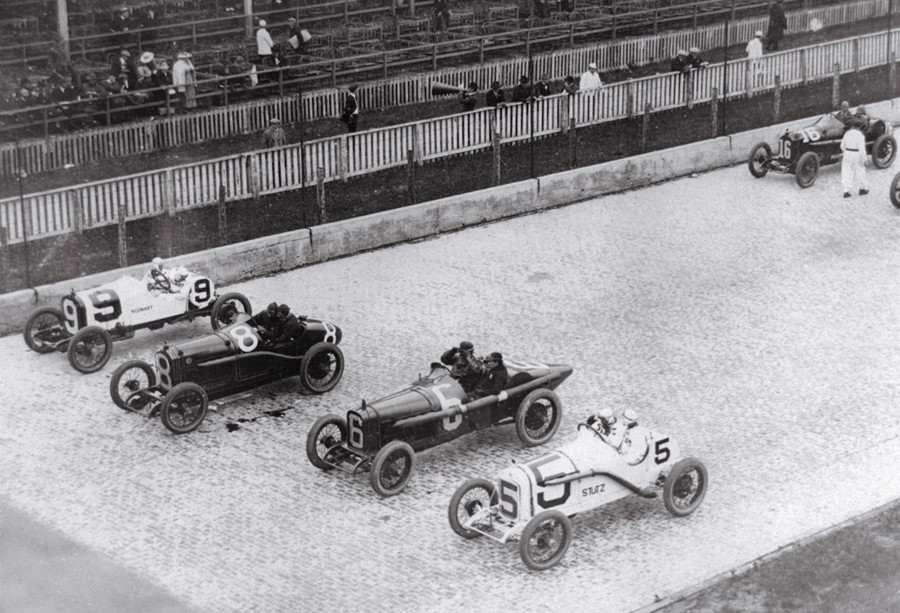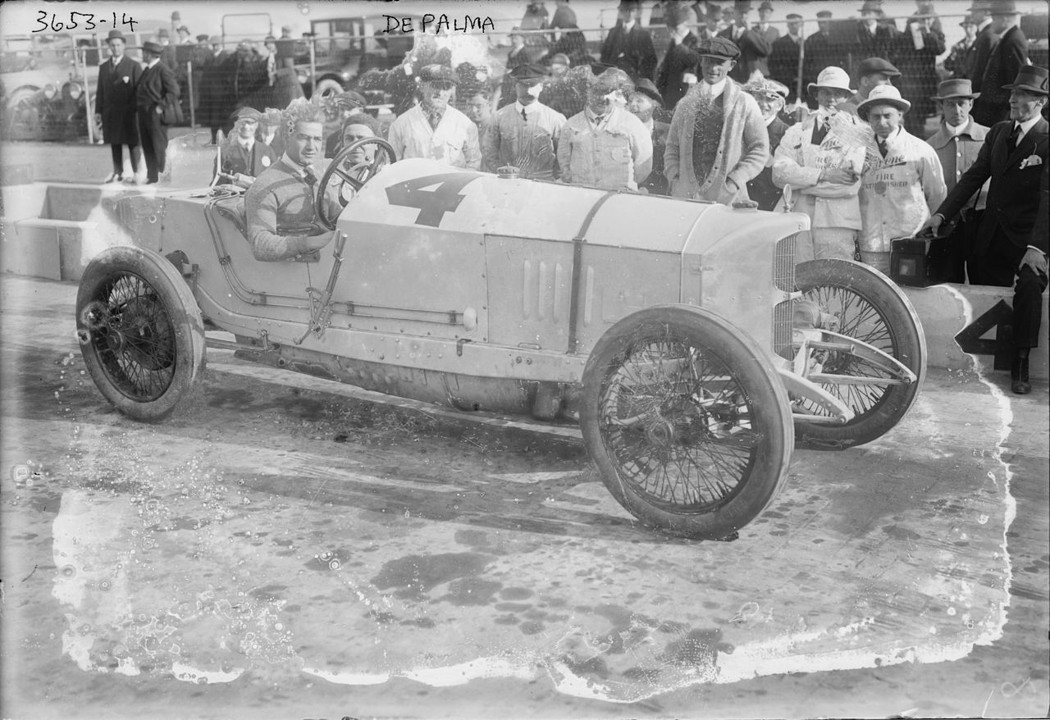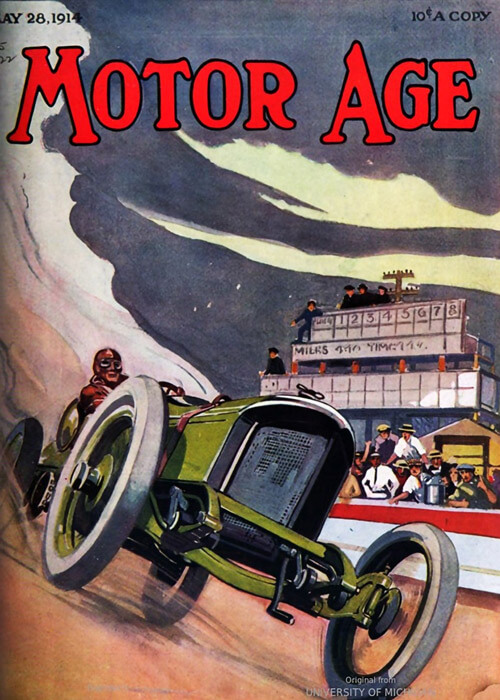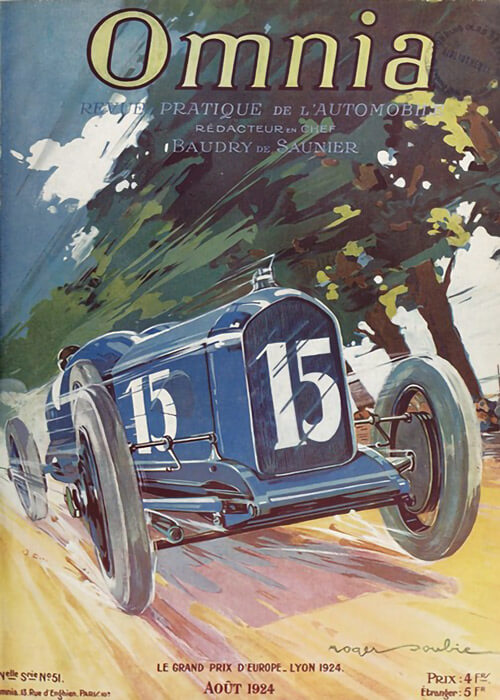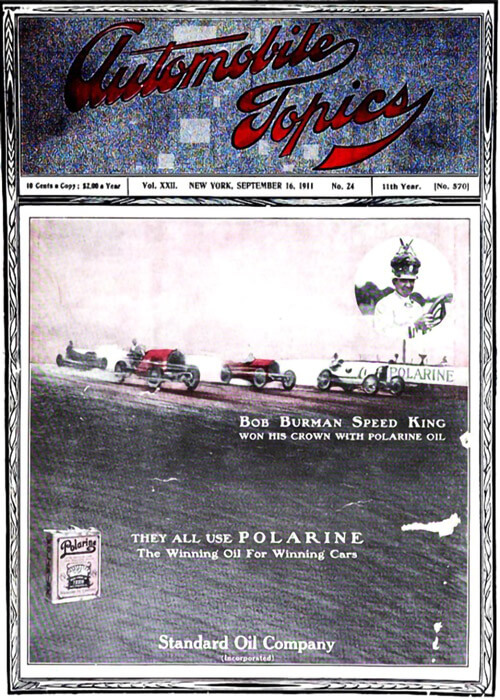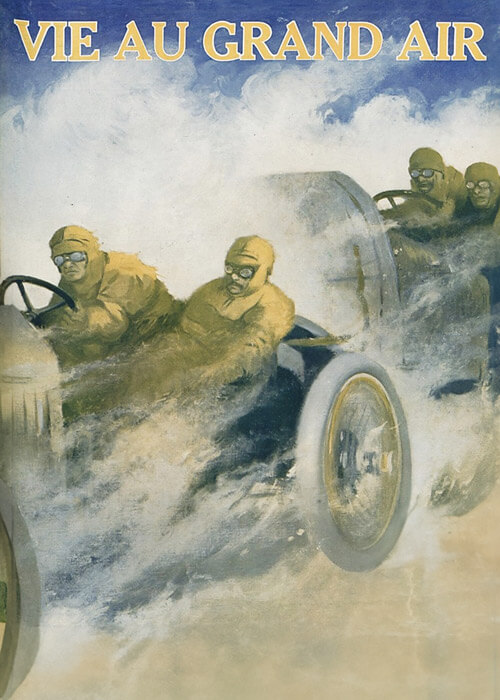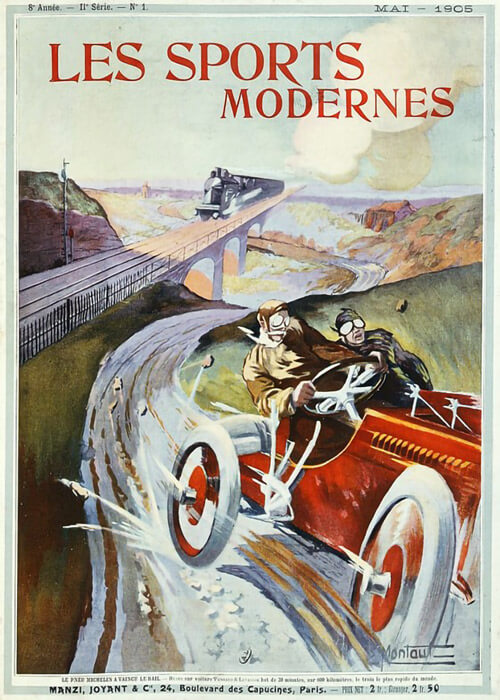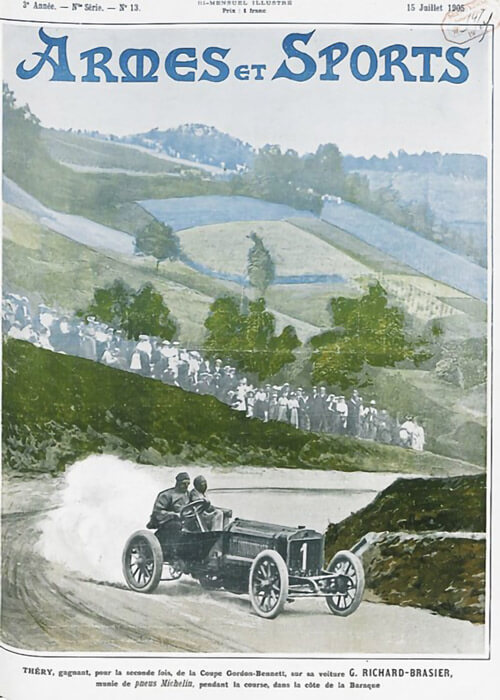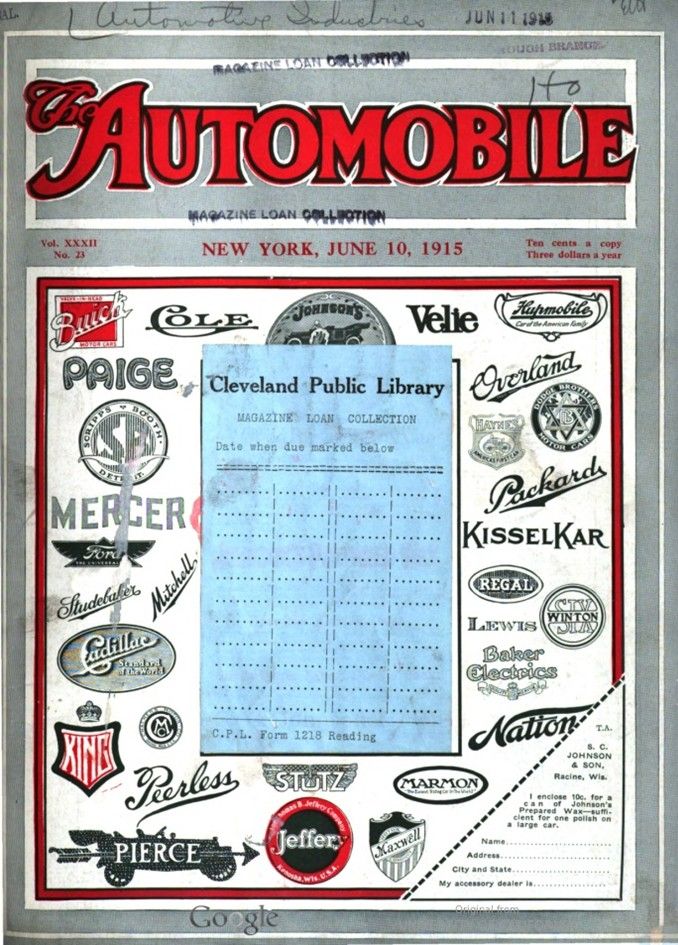
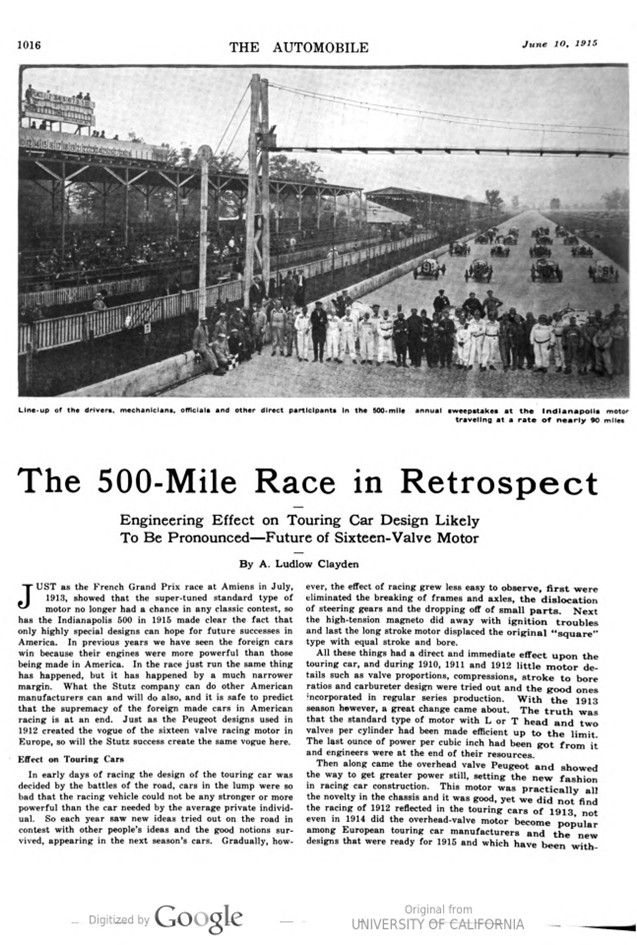


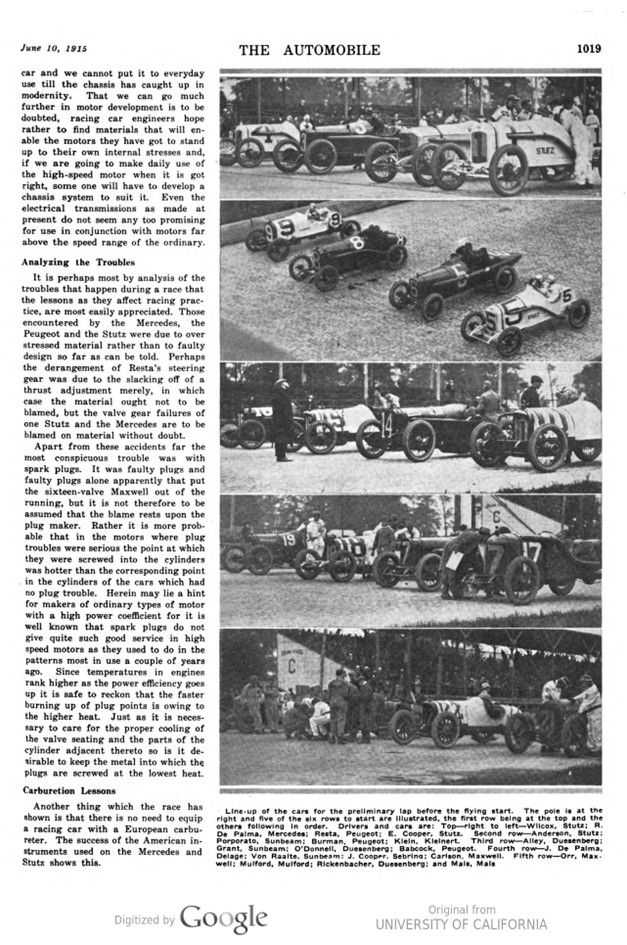


Text and jpegs by courtesy of hathitrust.org www.hathitrust.org, compiled by motorracinghistory.com
The Automobile, Vol. 32, No. 24, June 10, 1915, p. 1016 – 1019
The 500-Mile Race in Retrospect
Engineering Effect on Touring Car Design Likely to be Pronounced – Future of Sixteen-Valve Motor
By A. Ludlow Clayden
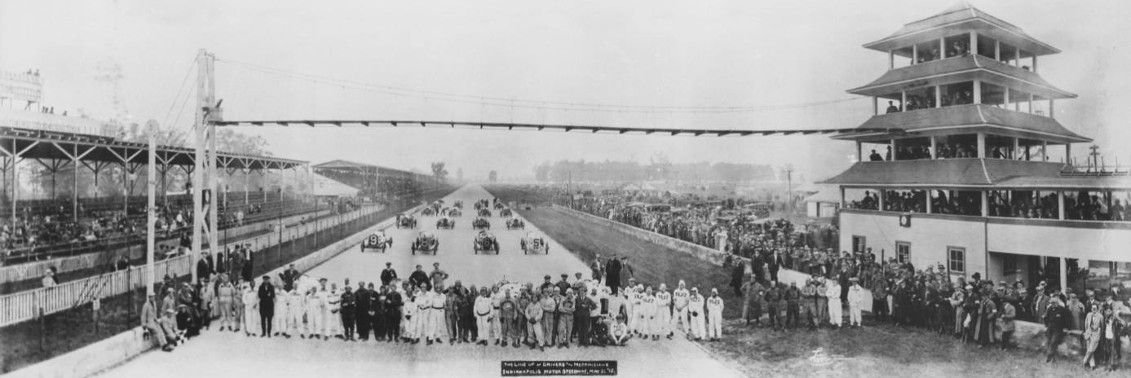
JUST as the French Grand Prix race at Amiens in July, 1913, showed that the super-tuned standard type of motor no longer had a chance in any classic contest, so has the Indianapolis 500 in 1915 made clear the fact that only highly special designs can hope for future successes in America. In previous years we have seen foreign cars win because their engines were more powerful than those being made in America. In the race just run the same thing has happened, but it has happened by a much narrower margin. What the Stutz company can do other American manufacturers can and will do also, and it is safe to predict that the supremacy of the foreign made cars in American racing is at an end. Just as the Peugeot designs used in 1912 created the vogue of the sixteen-valve racing motor in Europe, so will the Stutz success create the same vogue here.
Effect on Touring Cars
In early days of racing the design of the touring car was decided by the battles of the road, cars in the lump were so bad that the racing vehicle could not be any stronger or more powerful than the car needed by the average private individual. So each year saw new ideas tried out on the road in contest with other people’s ideas and the good notions survived, appearing in the next season’s cars. Gradually, however, the effect of racing grew less easy to observe, first were eliminated the breaking of frames and axles, the dislocation of steering gears and the dropping off of small parts. Next the high-tension magneto did away with ignition troubles and last the long stroke motor displaced the original „square“ type with equal stroke and bore.
All these things had a direct and immediate effect upon the touring car, and during 1910, 1911 and 1912 little motor details such as valve proportions, compressions, stroke to bore ratios and carbureter design were tried out and the good ones incorporated in regular series production. With the 1913 season however, a great change came about. The truth was that the standard type of motor with L- or T-head and two valves per cylinder had been made efficient up to the limit. The last ounce of power per cubic inch had been got from it and engineers were at the end of their resources.
Then along came the overhead valve Peugeot and showed the way to get greater power still, setting the new fashion in racing car construction. This motor was practically all the novelty in the chassis and it was good, yet we did not find the racing of 1912 reflected in the touring cars of 1913, not even in 1914 did the overhead-valve motor become popular among European touring car manufacturers and the new designs that were ready for 1915 and which have been withheld were not strikingly different from the standard practice of previous years. Either engineers did not consider the ultra high efficiency motor as necessary for a touring car, or they were afraid of it.
Limit of Practicable Speed
Power was got from the types of motors used for racing previous to 1912 by increasing the revolutions per minute a great deal and increasing the force of the explosion a little. Greater power was got from the overhead valve motors by a little increase of speed and a considerable increase in the explosion pressure and in 1914 the speeds were increased again and a trifle added to the pressures.
Now, if the weight of the reciprocating parts, the size of the bearings and all other things are the same the motor which operates at the lesser speed will have the longest life, within reasonable limits and the life of the motor is also probably in fairly direct proportion with the force of the explosion. In a touring car there are so many things to be desired in addition to power that it becomes questionable how far it pays to go in crankshaft speed and cylinder pressures.
In 1912 it was a general opinion among British engineers that the usual touring car of 1915 would have a motor capable of 4,000 r.p.m. and geared about five to one. In 1914 these same engineers had found out that cars put into the hands of the ordinary user with motors intended to run frequently at 3,000 to 3,500 r.p.m. were likely to give trouble. They were extremely susceptible to carbon formation, called for extreme care in lubrication and were distinctly likely to wear out the connecting-rod bearings. Also they needed a good deal of keeping in good condition, a little slack on the valve tappets had a great effect upon the power, the engines were liable to become very noisy unless well looked after, and the carburetion was rather difficult.
Naturally these experiences did not encourage the idea of using a still more efficient type of motor and the general feeling in Europe just before the war was that it would need a few years more of racing before the overhead valve engine with sixteen valves could be worked out sufficiently to take a place in scheduled production. It may be observed that even the Peugeot company have never put out a series car in any way resembling their racing machines.
Overhead Valve Limitations
Made with a normally low efficiency, or perhaps it would be better to say a normally high-power function, the overhead valve motor has been a great commercial success in America and has been used a good deal in Europe but this sort of engine has little akin to the racing motor. There is but little virtue in overhead valves per se, the reason they are used for racing now is simply that with them it is possible to get the greatest valve opening and so the highest speed revolution and the highest cylinder pressure. It is difficult to get quiet running with a large valve opening because a large opening means a large area of valve head and valve seat. It is similarly difficult to obtain quietness with a motor capable of very high speeds because they are got only by the use of quick lift cams which let the valves down fast instead of lowering them gently to their seatings and a quick valve descent means a snap as the valve meets the seat. We have never yet made use of the highest efficiency type of L head motor or the highest efficiency possible with two overhead valves so there is plenty of opportunity for power increase in touring car motors without going to the more expensive sixteen valve construction. This is not to say that it may not come someday, but merely to point out that there are reasons why the supremacy in racing of a particular type of motor does not make it necessarily desirable for ordinary cars.
Probably the most useful thing in racing experience today from the future private motorist’s point of view, is the opportunity it affords for testing new materials. From racing experiments engineers find out valve metals that will stand and valve metals that burn up and, while the latter may give good enough service in a touring car it is certain that the steel that is best for the racing motor will give the longest life in a touring engine. Similarly with valve springs, with spark plugs, with light piston alloys and with high pressure lubrication systems; all can be tried to the utmost limit on the race track and the good that is in either thing can be used to advantage on ordinary cars, but these things do not show to the eye, being known only to those intimately concerned. In the race just finished the most important thing learned is that light metals will stand up for pistons and other parts, and a piston that gives no trouble during a speedway 500 is good for many years‘ work on the road. It is not next year that we shall see these light alloys coming more into general use, but in 1917 the effect of today’s racing will certainly show. We have now demonstrated the use of aluminum in new compounds; it remains to put the production of those compounds upon a commercial basis that will permit their use in huge quantities. The writing on the wall suggests that we shall see much lighter cars in a few years time by reason of racing in 1915.
The Question of Gearing
Turning back to the high efficiency motor for a moment there is another reason which retards its general adoption, especially in America, and that is the fact that its power is obtained by virtue of its speed. Now, to use a high-speed motor we must use its speed or we shall have too little power, and to utilize the speed calls for a low top gear ration and demands gear shifting. Anent this might be mentioned the case of a popular car which is sold for a moderate price and has a fairly large four-cylinder motor. As sold the power reaches a maximum of about 35 horsepower, at under 2,000 r.p.m. The makers are well aware that a slight alteration to the camshaft would give them over 60 horsepower at a correspondingly higher rate of revolution, but if they used the higher power the ability of the car to crawl on top gear would be lost, it would be necessary to change to second speed fairly often in traffic and one could no longer go very slowly uphill without shifting. Thus the power is almost cut in two and the maximum speed reduced enormously in order to give the high gear ability demanded by the user. This may be good, it may be ideal from the user’s, viewpoint, that is neither here nor there; but it does show that there is potent reason against the general use of a high-speed engine designed to run normally at almost double the revolutions of what is now called a high speed touring car motor.
Actually one might say that the racing motor is ahead of our ability to handle it.
Motor Overdeveloped?
Just for argument’s sake let us imagine a new form of transmission in which we could run the motor at a very high speed without any noisy or inefficient reduction gearing. Suppose some method for giving us an eight to one high gear ratio without any loss of power and then we might consider the possibility of using a very small motor with very high speed capability. As things are, the habits of the driver engendered by the types of car given to him for 5 or 6 years past, the nature of the transmission, the natural disinclination to attempt a reconstruction of all our ideas concerning chassis design, these things militate against any great changes in the motor.
Given the money for working out the idea it is probable that a wonderful car could be built with a 4,000 r.p.m. motor, but it would need some new sort of gearing, some new kind of gear shifting, and a tremendous advertising campaign to educate the motorist in the use and handling of the new type of car. Which simply means that to change over now and suddenly to the ultra-high-speed engine would be a disadvantage to everyone. The motor is years ahead of the rest of the car and we cannot put it to everyday use till the chassis has caught up in modernity. That we can go much further in motor development is to be doubted, racing car engineers hope rather to find materials that will enable the motors they have got to stand up to their own internal stresses and, if we are going to make daily use of the high-speed motor when it is got right, someone will have to develop a chassis system to suit it. Even the electrical transmissions as made at present do not seem any too promising for use in conjunction with motors far above the speed range of the ordinary.
Analyzing the Troubles
It is perhaps most by analysis of the troubles that happen during a race that the lessons as they affect racing practice, are most easily appreciated. Those encountered by the Mercedes, the Peugeot and the Stutz were due to over-stressed material rather than to faulty design so far as can be told. Perhaps the derangement of Resta’s steering gear was due to the slacking off of a thrust adjustment merely, in which case the material ought not to be blamed, but the valve gear failures of one Stutz and the Mercedes are to be blamed on material without doubt.
Apart from these accidents far the most conspicuous trouble was with spark plugs. It was faulty plugs and faulty plugs alone apparently that put the sixteen-valve Maxwell out of the running, but it is not therefore to be assumed that the blame rests upon the plug maker. Rather it is more probable that in the motors where plug troubles were serious the point at which they were screwed into the cylinders was hotter than the corresponding point in the cylinders of the cars which had no plug trouble. Herein may lie a hint for makers of ordinary types of motor with a high power coefficient for it is well known that spark plugs do not give quite such good service in high speed motors as they used to do in the patterns most in use a couple of years ago. Since temperatures in engines rank higher as the power efficiency goes up it is safe to reckon that the faster burning up of plug points is owing to the higher heat. Just as it is necessary to care for the proper cooling of the valve seating and the parts of the cylinder adjacent thereto so is it desirable to keep the metal into which the plugs are screwed at the lowest heat.
Carburetion Lessons
Another thing which the race has shown is that there is no need to equip a racing car with a European carbureter. The success of the American instruments used on the Mercedes and Stutz shows this.
Photo captions. – June 10, 1915 – The Automobile
Page 1018.
At one time during the race two of the three Maxwells were at the pits for tire changes and the pit crew had to put on top speed.
Anderson’s Stutz at the pits for a tire change at the end of a 100-mile grind
Page 1019.
Line-up of the cars for the preliminary lap before the flying start. The pole is at the right and five of the six rows to start are illustrated, the first row being at the top and the others following in order. Drivers and cars are:
Top-right to left – Wilcox, Stutz; R. De Palma, Mercedes; Resta, Peugeot; E. Cooper, Stutz.
Second row – Anderson, Stutz; Porporato, Sunbeam; Burman, Peugeot; Klein, Kleinert.
Third row – Alley, Duesenberg; Grant, Sunbeam; O’Donnell, Duesenberg; Babcock, Peugeot.
Fourth row – J. De Palma, Delage; Von Raalte. Sunbeam: J. Cooper. Sebring; Carlson. Maxwell.
Fifth row – Orr, Maxwell; Mulford, Mulford; Rickenbacher, Duesenberg; and Mais, Mais
